Why You Need a Content Calendar

Having a content calendar is a little like meal prepping for the week. Gather all your necessary ingredients, spend a few dedicated hours in the kitchen, and voila! you have set yourself up for success in the week to come (maybe more if you utilize your freezer) with good, homemade food.
A content calendar works much the same way – spend a bit of time sketching out big plans for the year, and more specific plans for week by week, and you’re never left wondering what your next social post or press release will focus in on.
Your content calendar should be just one facet of your overall marketing calendar. A quick breakdown of the difference:
Marketing calendar: this focuses more on those big picture, overarching goals and plans. This can be set out for an entire year. At minimum, 3 – 6 months. This is a snapshot of ALL planned marketing efforts, not just social or content. This includes things like webinars and podcasts, email drips, timelines of when to implement certain sales strategies and funnels. This should also include all recurring items – monthly newsletters, press releases and of course, and known big ticket items – such as trade shows or speaking engagements.
Content calendar: this could be planned out up to a month in advance, depending on how you like to plan your content. To use a real “lingo-y” term, this could also be considered your content ecosystem. This will outline your posting schedule – what content goes where, what is paid vs. organic, when is the blog repurposed to Instagram, and when does the IG story about the repurposed blog post go live.
One great thing about setting up a calendar is that you can look at the entire month, or after time, look back to several months ago, and ensure that you aren’t posting the same content or media and thus keep things fresh. Of course there are times in which repurposing the same content is useful – such as an ebook you’ve written or a company brand video – but in general, the calendar gives you the foresight and hindsight to better provide quality pieces people will want to engage with.
Another key benefit to utilizing planned out posts, is that you don’t find yourself stuck posting the same kinds of content too often. Again, the calendar gives you a good metric for what you’ve done and a plan moving forward. For instance, in our office, every Wednesday is “Wednesday Wins” – so when we post on social, it gets the #WednesdayWin. It not only provides the daily hashtag, but it gives the focus for that post – it can be an internal win (sales are up!) or a client win (new website live!) but the focus is always positive. There are tons of these kinds of days out there – #throwbackThursday or #techFriday. No need to overdo these, but it does help give some structure.
In the end, planning out your content weeks at a time saves you time and energy and gives your content greater focus and (hopefully) increases your engagement as you learn what works and what might not. Additionally, it sets out all the tools at your disposal for consistent outreach easy access.
Just like that meal plan, you’ll hit on some favorites and quietly learn which recipe doesn’t make the cut for a future calendar. And these days, anything that saves you time and energy to focus elsewhere on bigger projects is always going to be a success.


